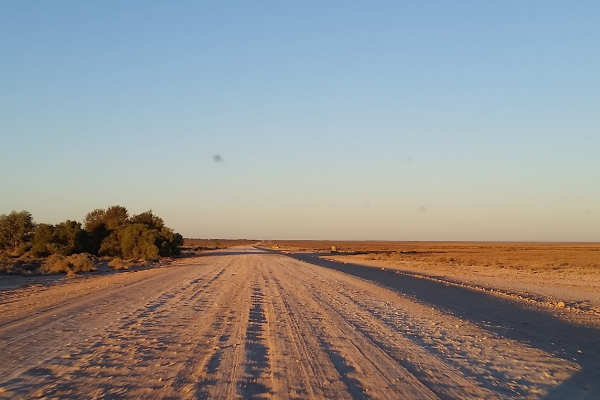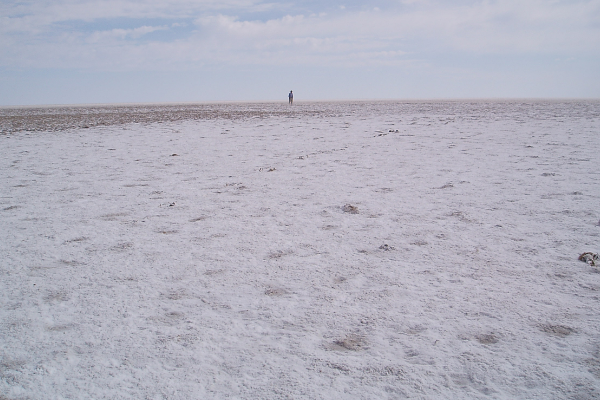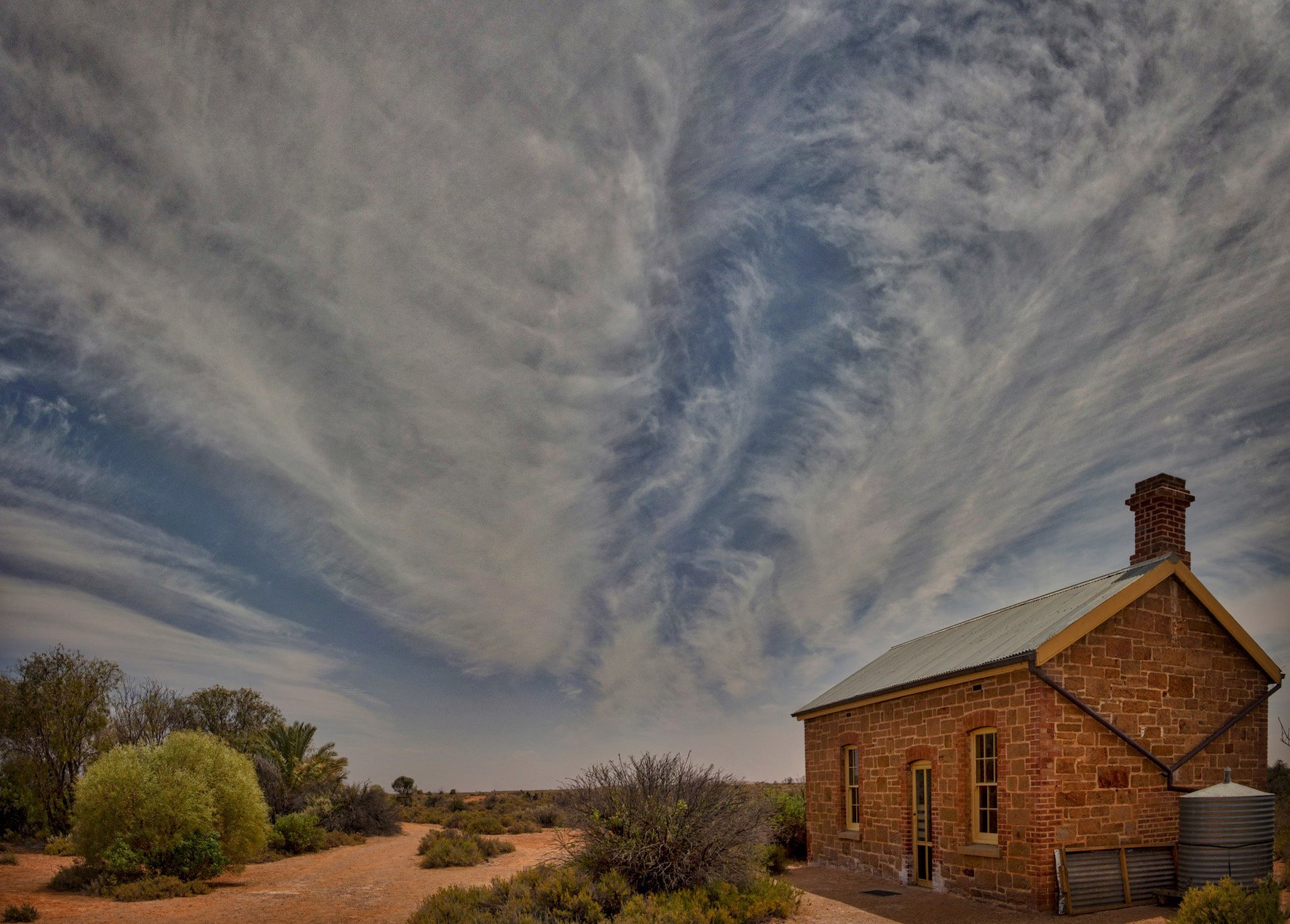Get a Sense of the Outback

The Oodnadatta Track
- Travelling along the Oodnadatta Track from either William Creek or Marree you enter Wabma Kadarbu Conservation Park about 10 kilometres either side of Coward Springs.
- This park conserves the unusual natural features known as mound springs. Here water seeps to the surface from the Great Artesian Basin, a huge natural underground reservoir of water. Sand and minerals deposit to form mounds that stand above the surrounding flat, salty landscape. Lush green reeds and other plants grow around the spring and its overflow, the tail. This permanent water supports a variety of life including birds, fish and aquatic invertebrates – some of which are found only in these springs.
- Blanche Cup and The Bubbler mound springs are well known as showcase mound springs. To see them you turn off the Oodnadatta Track about 6 kilometres to the south-east of Coward Springs. As you stand and look at these pools of permanent water you will understand how important they were for local indigenous people and later for early European explorers. The fact of their being here later decided the route of the Overland Telegraph and then the Ghan Railway.

Views of Lake Eyre
- Lake Eyre is an immense usually dry salt lake covering an area of over 8000 square kilometres. There has been water in Lake Eyre for the last three years, an event that happens rarely and is dependent on widespread outback rains in Queensland that feed the river systems leading into the lake.
- Visitors flock to see Lake Eyre when it is full but the seemingly endless landscape when it is dry is as truly astounding.
Lake Eyre can be seen from
- The Oodnadatta Track about 40km south of Coward Springs (Lake Eyre South which can have water in it from local rain)
- ABC/Halligan Bay, an unrushed day trip from Coward Springs, 70kms along the Oodnadatta Track towards William Creek, then 64kms (4WD only) in to the Lake.
- Muloorina Station, off the Birdsville Track 94kms from Marree (2WD not recommended).
See the Historical Sites

Railway Heritage
- The ‘Old Ghan’ railway reached Coward Springs in 1888, Oodnadatta by 1891 and Alice Springs in 1929. The last Old Ghan train ran in 1980.
- Coward Springs Siding was once the most western point on the line. At the turn of the century camel teams transported goods to pastoral stations to the west and to the goldfields at Tarcoola.
- Coward Springs Railway Site was listed with the South Australian Heritage Register in 1998.
- There were a number of buildings at Coward Springs during railway days but the only two remaining are the Station Masters House and the Engine Drivers Cabin.

Restored Heritage Buildings
- Both the Station Masters House and the Engine Drivers Cabin have been restored using traditional methods and to original plans. They are the only heritage buildings along the Oodnadatta Track to be restored. Several others have been stabilised in recent years including Margaret Siding (fettlers cottages) about 12km towards Marree and the buildings at Strangways Telegraph Station about 35 kilometres toward William Creek.
- The Engine Drivers Cabin is open as a museum for campers and day visitors to browse displays and artwork. Plans and a photo album of the restoration process are on display as well as various displays and books that will give you a sense of place and time. (The museum is closed between late October and April.)
- The stationmaster’s house has been restored as our home.
Relax

The Natural Spa
- When the bore was rehabilitated Greg and a friend (thanks Fergie) built the ‘natural spa’ to imitate the old pool. The water now flows from the bore through the ‘natural spa’ and into the wetland. Visitors can still soak in the revitalising artesian water just as people bathed for decades in the old pool.
- While you soak in the spa you can often hear water birds in the rushes right next to you, a favourite being the Clamourous Reed-warbler in Spring.

Camp
- Campsites are in the shade and shelter of historic trees including date palms; other sites are amongst more recently planted native trees.
- Facilities are built from recycled railway materials with some surprising details, including artwork.
- Hang out, play cards and talk to your friends, whilst enjoying the outback.
- The feeling is that of a bush camp but with the comfort of toilets and showers plus attractions such as a ‘natural spa’ and a museum that will make you want to stay longer.
Explore the Oasis

The Wetland
- Coward Springs has a permanent wetland, which is part of the region’s cultural heritage.
- In 1887 a bore was sunk here in preparation for the coming railway. By the 1920’s millions of gallons of water flowed without control over the dry gibber plains. The salty water from the Great Artesian Basin had quickly corroded the bore head and the bore casing to create an evolving wetland. A large pool also formed where water bubbled from the corroded bore and this became a popular bathing place for locals, railway crew and travellers.
- The bore was rehabilitated in 1993 by the Department of Mines and Energy. It was redrilled and relined and the flow rate controlled and reduced.
- In 1996, 200 hectares – including about 70 hectares of wetland – was conserved under a Heritage Agreement with the South Australian Government.
- The wetland continues to be a haven for wildlife – an oasis that provides water and food, shelter and breeding areas. So far 99 plant species, 126 bird species and numerous small native mammals, reptiles, aquatic and terrestrial invertebrates have been recorded here.

Birdwatching
- Take a self-guided walk. Use the historical map provided to discover the details of Coward Springs from its beginnings as a railway settlement through to today.
- Spend a few hours in the Engine drivers cabin, restored and open as a museum, read the stories and memories of many people for a glimpse into the past, discover the significance of the area for local indigenous people, understand the European heritage of this region and see the photographic record of our heritage site restoration

